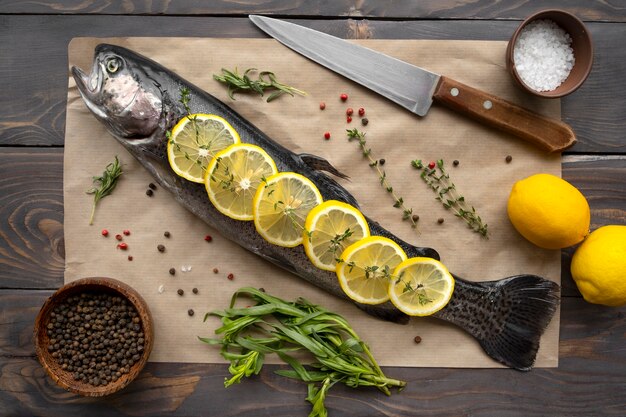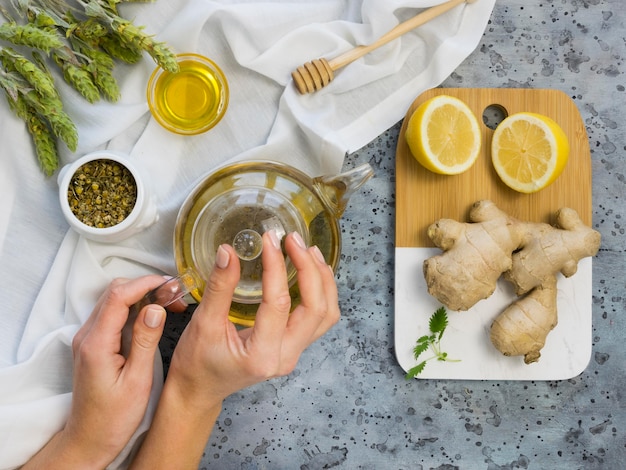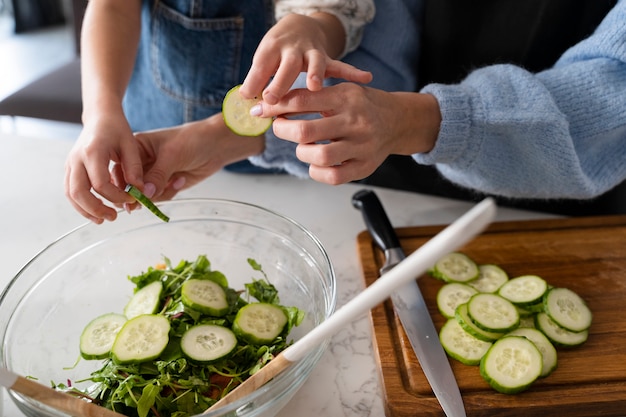Lemongrass. Just saying the word conjures up images of fragrant Southeast Asian dishes, vibrant green curries, and refreshing iced teas. It's a bit of a culinary chameleon, isn't it? From adding a citrusy zing to a spicy curry to lending a refreshing note to a summer drink, this versatile ingredient pops up in all sorts of dishes. I've been a lemongrass fan since my first taste of a Thai green curry, bursting with its distinctive flavor. There's something utterly addictive about that combination of zesty lemon, earthy warmth, and a hint of spice.
Whether you're a seasoned chef or a newbie in the kitchen, I'm here to take you on a journey through the world of lemongrass. We'll talk about how to use it, explore its different forms, and dive into a collection of recipes that showcase its versatility. Let's get cooking, shall we?
(Part 1) All About Lemongrass

1.1 What is Lemongrass?
Okay, let's start with the basics: What is lemongrass, exactly? Well, it's a type of grass, but not the kind you'd find in your lawn! Lemongrass, scientifically known as Cymbopogon citratus, is a tall, fragrant grass with a distinctive lemon-like aroma. It's a staple in many Southeast Asian cuisines, especially in Thailand, Vietnam, and Indonesia. Its flavor is a captivating blend of citrusy, grassy, and subtly spicy notes, with hints of ginger and mint thrown in for good measure. It's like a culinary magic trick - one moment you're tasting lemon, the next you're getting a hint of ginger. Quite remarkable, really.
1.2 Where to Find It
Now, you might be wondering where to find this culinary treasure. Most supermarkets these days carry fresh lemongrass, usually bundled together in the produce section. If you're lucky enough to have an Asian market nearby, you'll find even more variety, including the delicate, thinner stalks often used in Vietnamese cooking. You can also find dried lemongrass, but the flavor is a bit less potent. Personally, I always go for fresh when I can, but dried lemongrass is a good option in a pinch.
1.3 Understanding Lemongrass Stalks
Before we move on to using lemongrass, let's take a closer look at its structure. A lemongrass stalk is divided into two main parts: the tender, white bulb at the base and the tough, fibrous outer layers. The bulb is where the most flavor is concentrated, while the outer layers are best avoided as they can be quite chewy and unpleasant to eat.
1.4 How to Prepare Lemongrass
Preparing lemongrass is a bit like a culinary puzzle. You need to extract the flavorful bulb while discarding the tough outer layers. Here's a step-by-step guide to get you started:
- Trim the ends: Cut off the tough top and bottom ends of the stalk.
- Bruise: Use the back of a knife or a heavy object to bruise the stalk. This releases the oils and aromas, intensifying the flavor.
- Slice or mince: Depending on the recipe, you can slice the lemongrass into thin rounds or mince it finely.
- Remove the tough outer layers: Once bruised, you can peel away the tough outer layers of the lemongrass bulb, revealing the tender, flavorful interior.
I find bruising the lemongrass is a crucial step in unlocking its full flavor potential. Don't skip it – you won't regret it!
(Part 2) Cooking with Lemongrass

2.1 Lemongrass in Asian Cuisine
Now, let's talk about lemongrass's role in Asian cuisine. It's an absolute essential, especially in Southeast Asian cooking. From spicy curries to fragrant soups and stir-fries, lemongrass adds that signature zing and complexity that makes these dishes so unique.
Imagine this: You take a bite of a Thai green curry, and the first thing that hits you is the explosion of lemony fragrance, then comes the warmth of the ginger and chillies, all intertwined with the subtle sweetness of coconut milk. That's the magic of lemongrass at work! It's often paired with other aromatic ingredients like ginger, galangal, and chillies, creating a symphony of flavors that's both exhilarating and comforting.
2.2 Lemongrass in Western Cuisine
But lemongrass isn't just for Asian cuisine. It's also finding its way into Western cooking, adding a touch of exoticism to everything from soups and stews to marinades and sauces. I've even seen it used in desserts, lending a unique citrusy twist to lemon tarts and cakes. It's like a culinary passport, taking your taste buds on a journey to different parts of the world!
2.3 Lemongrass in Beverages
Now, let's not forget about drinks! Lemongrass is a refreshing addition to both hot and cold beverages. It's a popular ingredient in iced teas and fruit punches, adding a lemony zing and a subtle grassy aroma. And if you're feeling adventurous, you can even try infusing lemongrass into vodka or gin. I find a lemongrass-infused gin tonic is a truly delightful summer drink. It's so refreshing and invigorating!
(Part 3) Recipes: Unleashing Lemongrass Flavours

Okay, now we're getting to the good stuff: Recipes! I've gathered some of my favorite lemongrass recipes that are sure to tantalize your taste buds and showcase the versatility of this amazing ingredient.
3.1 Classic Thai Green Curry
This is a must-try for any lemongrass enthusiast. The curry is bursting with flavor, thanks to the combination of lemongrass, galangal, kaffir lime leaves, and chillies. It's usually served with chicken, fish, or tofu, and is best enjoyed with a generous helping of fragrant jasmine rice.
Ingredients:
- 2 tbsp coconut oil
- 1 large onion, chopped
- 4 cloves garlic, minced
- 2 stalks lemongrass, bruised and chopped (remove tough outer layers)
- 2 tbsp green curry paste
- 1 can (400 ml) coconut milk
- 1 cup chicken or vegetable stock
- 1 cup cubed chicken, fish, or tofu
- 1/2 cup bamboo shoots, chopped
- 1/2 cup green beans, chopped
- 1/4 cup Thai basil leaves, chopped
- Salt and pepper to taste
Instructions:
- Heat the coconut oil in a large saucepan over medium heat. Add the onion and cook until softened, about 5 minutes.
- Add the garlic, lemongrass, and green curry paste and cook for 1 minute, stirring constantly.
- Pour in the coconut milk and chicken or vegetable stock. Bring to a simmer and cook for 10 minutes.
- Add the chicken, fish, or tofu, bamboo shoots, and green beans. Simmer until the chicken, fish, or tofu is cooked through and the vegetables are tender, about 5 minutes.
- Stir in the Thai basil leaves and season with salt and pepper to taste.
- Serve hot over rice.
3.2 Lemongrass Chicken Skewers
These skewers are a vibrant and flavourful appetizer or main course. The lemongrass and ginger marinade give the chicken a delicious citrusy kick, while the grilled flavour adds a smoky depth.
Ingredients:
- 1 lb boneless, skinless chicken breasts, cut into 1-inch cubes
- 1 stalk lemongrass, bruised and finely chopped (remove tough outer layers)
- 1 inch ginger, grated
- 2 cloves garlic, minced
- 1 tbsp soy sauce
- 1 tbsp honey
- 1 tbsp lime juice
- 1/2 tsp red pepper flakes (optional)
- Salt and pepper to taste
- Wooden skewers, soaked in water for 30 minutes
Instructions:
- In a large bowl, combine the chicken, lemongrass, ginger, garlic, soy sauce, honey, lime juice, red pepper flakes (if using), salt, and pepper.
- Mix well to coat the chicken. Cover and refrigerate for at least 30 minutes, or up to 4 hours.
- Thread the chicken onto the skewers.
- Preheat a grill to medium heat.
- Grill the skewers for 5-7 minutes per side, or until cooked through.
- Serve hot.
3.3 Lemongrass and Ginger Soup
This soup is both comforting and invigorating. The combination of lemongrass and ginger creates a warming, spicy flavour that's perfect for a chilly evening. It's also a great way to use up leftover chicken or vegetables.
Ingredients:
- 1 tbsp olive oil
- 1 large onion, chopped
- 2 stalks lemongrass, bruised and chopped (remove tough outer layers)
- 1 inch ginger, grated
- 2 cloves garlic, minced
- 4 cups chicken or vegetable stock
- 1 cup cubed cooked chicken or vegetables
- 1/2 cup chopped cilantro
- Salt and pepper to taste
Instructions:
- Heat the olive oil in a large saucepan over medium heat. Add the onion and cook until softened, about 5 minutes.
- Add the lemongrass, ginger, and garlic and cook for 1 minute, stirring constantly.
- Pour in the chicken or vegetable stock. Bring to a simmer and cook for 10 minutes.
- Add the cooked chicken or vegetables and simmer for another 5 minutes.
- Stir in the cilantro and season with salt and pepper to taste.
- Serve hot.
3.4 Lemongrass and Coconut Rice
This fragrant rice is a delicious accompaniment to any Asian-inspired dish. The coconut milk adds a creamy richness, while the lemongrass gives it a bright, citrusy flavor. It's also surprisingly easy to make!
Ingredients:
- 1 cup long-grain rice, rinsed
- 1 1/2 cups coconut milk
- 1 stalk lemongrass, bruised and chopped (remove tough outer layers)
- 1/2 tsp salt
- 1/4 cup chopped cilantro
Instructions:
- In a medium saucepan, combine the rice, coconut milk, lemongrass, and salt.
- Bring to a boil, then reduce heat to low, cover, and simmer for 15-20 minutes, or until the rice is cooked through and the liquid is absorbed.
- Remove from heat and let stand for 5 minutes before fluffing with a fork.
- Stir in the cilantro and serve hot.
(Part 4) Lemongrass Beyond Cooking
You might be thinking: "Lemongrass? Isn't that just for cooking?" But hold on, there's more to this versatile ingredient than meets the eye. It's also a natural wonder with potential health benefits.
4.1 Lemongrass for Relaxation
You know how I love a relaxing bath? Well, lemongrass can be a real lifesaver! You can make a soothing lemongrass bath by adding a few drops of essential oil or using dried lemongrass. The calming scent is said to help reduce stress and anxiety. It's a bit like a mini-spa experience right at home!
4.2 Lemongrass for Pest Control
Here's something I hadn't thought about until recently: Lemongrass can be a natural pest deterrent! The strong scent of lemongrass is said to repel mosquitos and other insects. You can try planting lemongrass in your garden or using lemongrass essential oil in a diffuser. It's a natural alternative to harsh chemical repellents, which I always appreciate.
4.3 Lemongrass for Beauty
Believe it or not, lemongrass has even made its way into the world of beauty! The essential oil is often used in skincare products, and it's said to help reduce acne and blemishes. You can even use it as a natural hair conditioner, adding shine and softness to your locks. It's a real multi-tasker, this lemongrass!
(Part 5) FAQs: Your Lemongrass Queries Answered
Alright, I've got a feeling you might have a few questions about this amazing ingredient. Let's tackle them head-on!
5.1 Is Lemongrass Safe to Eat?
Yes, lemongrass is perfectly safe to eat. It's the tender white bulb at the base of the stalk that you want to use in your cooking. However, it's important to remove the tough outer layers, which are fibrous and can be quite unpleasant to eat.
5.2 What Does Lemongrass Taste Like?
Lemongrass has a distinctive citrusy flavour, reminiscent of lemon, with hints of ginger, mint, and a touch of spice. It's a unique and versatile flavour that adds a touch of exoticism to any dish.
5.3 Can I Substitute Lemongrass?
You can try substituting lemongrass with other citrusy ingredients, like lemon zest, lime juice, or kaffir lime leaves. However, keep in mind that these substitutes won't have the same grassy and slightly spicy notes that lemongrass offers.
5.4 How Long Does Lemongrass Last?
Fresh lemongrass will last for several days in the refrigerator if stored properly. Wrap the stalks in a damp paper towel and place them in a plastic bag. Dried lemongrass can be stored in an airtight container in a cool, dry place for up to 6 months.
5.5 How Much Lemongrass Should I Use?
The amount of lemongrass you use will depend on the recipe and your personal preference. A good rule of thumb is to start with a small amount and adjust to taste. Remember, you can always add more, but you can't take it back!
(Part 6) Let's Get Creative with Lemongrass
Alright, I've shared some of my favourite recipes, but don't feel limited by them. This is your chance to get creative in the kitchen and explore the endless possibilities of lemongrass.
6.1 Experiment with Marinades
Lemongrass makes a fantastic addition to marinades for chicken, fish, or tofu. Combine it with soy sauce, ginger, garlic, and other spices for a flavourful and aromatic marinade that will take your dishes to the next level.
6.2 Infuse Oils and Vinegars
Infuse your cooking oils or vinegars with lemongrass for a flavour boost. It's a simple and effective way to add a touch of lemony zing to your salads, soups, and stir-fries.
6.3 Spice Up Your Desserts
Don't shy away from using lemongrass in desserts! Add a bit of chopped lemongrass to your favourite lemon curd recipe, or use it to infuse sugar or syrup for a unique citrusy twist.
(Part 7) Lemongrass: The Final Verdict
Well, there you have it! My culinary journey with lemongrass has been a delightful one, and I hope this guide has inspired you to explore its versatility. From fragrant curries to refreshing drinks, this grassy wonder can add a touch of magic to your cooking. It's not just a flavor; it's an experience. So go on, embrace the lemony zing, and let your culinary creativity soar.
(Part 8) Table of Lemongrass Applications
To illustrate lemongrass's versatility even further, here's a table summarizing its common applications:
| Category | Applications |
|---|---|
| Cooking | Curries, soups, stews, stir-fries, marinades, sauces, rice dishes, desserts |
| Beverages | Iced teas, fruit punches, infused vodkas and gins |
| Wellness | Relaxation (baths, essential oils), pest control, beauty (skincare, hair care) |
As you can see, lemongrass offers a range of culinary and wellness benefits, making it a truly remarkable ingredient.
Everyone is watching

Perfect Rice Every Time: The Ultimate Guide to Cooking Rice
Cooking TipsAs a self-proclaimed foodie, I've always been a bit obsessed with rice. It's the foundation of countless cuisi...

Prime Rib Roast Cooking Time Chart: Per Pound Guide
Cooking TipsPrime rib roast. Just the name conjures images of lavish dinners, crackling fires, and hearty laughter. It’s ...

The Ultimate Guide to Cooking Asparagus: Tips, Techniques, and Recipes
Cooking TipsAsparagus. The mere mention of this spring delicacy conjures up images of vibrant green spears, crisp and burs...

Ultimate Guide to Cooking the Perfect Thanksgiving Turkey
Cooking TipsThanksgiving. Just the word conjures up images of overflowing tables laden with delicious food, the scent of r...

How Long to Bake Potatoes in the Oven (Perfect Every Time)
Cooking TipsBaked potatoes are a staple in my kitchen. They're incredibly versatile, delicious, and surprisingly easy to m...
